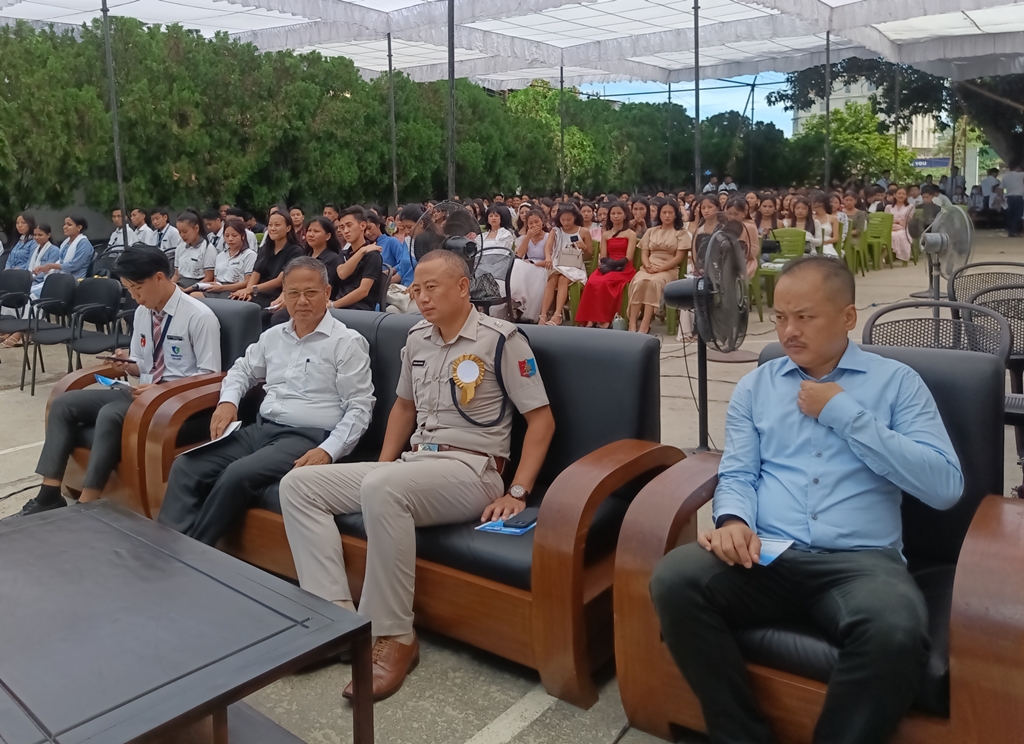Share

DIMAPUR — Dimapur police is grappling with a deluge of cybercrime, receiving an estimated 6-7 complaint monthly, according to Additional Deputy Commissioner of Police Kenesa Dawhuo.
He revealed these figures during the freshers’ social and annual day celebration at Immanuel College on Friday.
Dawhuo stated that data from the National Cyber Crime Reporting Portal (NCRP) showed over 400 complaints from Dimapur starting early 2020 till August 2024. This, he said, is just the tip of the iceberg, as many victims choose to suffer in silence.
He expressed concern that even educated professionals, elders and police personnel in Nagaland are falling prey to various cyber scams.
“There is nothing much the government can do because the cybercrime fraudsters are mostly based in India but they are using proxy virtual data networks which are very difficult to track and arrest,” he explained. He added that even central government bodies struggle to make headway in these cases, often resorting to simply blocking numbers used in fraudulent activities.
Emphasising that awareness and vigilance are paramount, the officer warned against falling for promises of huge returns and profit which is a common tactic used by scammers.
He also highlighted the emerging global threat of AI-generated voice scams, where fraudsters use technology to mimic the voices of loved ones to solicit emergency funds. While such cases have not been reported in Nagaland, he urged for caution.
Dawhuo also addressed the growing drug problem in Nagaland, attributing it to the state's location within the “golden triangle” of narcotics trade. He cited unrest in neighbouring Myanmar and Manipur as contributing factors to the increased availability of drugs.
“The availability of drugs in Nagaland has become so high that it has become a transit point for various smugglers, drug operators”, he said, maintaining that the state is a “victim of drug trafficking in India.”
He expressed concern over increasing drug use among Nagaland's youth, revealing that college students are among those affected. He lamented that while authorities are aware of the issue, legal action is often hampered as the students are primarily users, not distributors.
“It is disheartening to see them abusing drugs at a young age,” he stated, noting “sunflower” as the most prevalent drug in the region currently. Despite ongoing crackdowns, police efforts are hampered by the sheer scale of the drug trade, he said.
"We are not able to make much breakthrough because the scale of the products is too huge," Dawhuo admitted.
He urged students to avoid even experimenting with drugs, highlighting their addictive nature and devastating impact.
He also shared data gathered by Dimapur police, revealing that between 2019 and 2023, drugs worth INR 18.5 crore were seized and destroyed. However, he stressed that this represents only a fraction of the actual volume of drugs flowing through the region.
Despite the benefits of the digital revolution, the police officer expressed concern over societal failure in addressing the growing problem of “digital addiction”.
With the technological revolution, many issues have come up including a “digital deluge”, which has caused information overload and is not only hampering productivity but also distorting peace of mind.
He went on to say that digital distractions have “replaced our ability to sustain the attention necessary for deep relationship, deep learning and for deep word”, Dawhuo urged for a balanced approach to technology use.
“We have outsourced our memory with digital gadgets...People let digital [devices] do most of the critical thinking and reasoning for us, surrendering our ability to draw conclusions,” he observed.
Urging for a balanced approach to technology use, Dawhuo stressed the need for moderation and mindful engagement with the digital world to mitigate potential negative consequences for present and future generations.